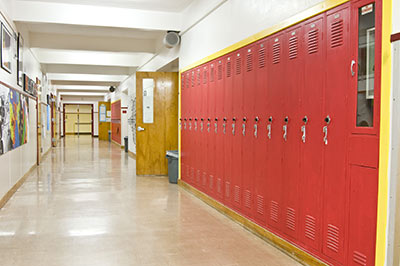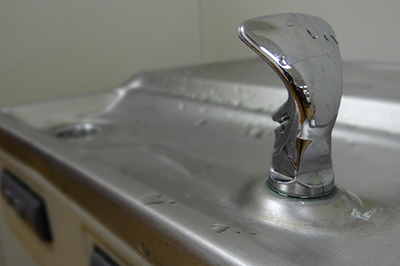U.S. Department of Health and Human Services, 2014.
ASTHMA IS COMMON AMONG STUDENTS
Approximately 7 million children younger than 18 years of age in the United States have asthma.1
In a classroom of 30 students, about 3 currently have asthma.2 This rate may be higher in densely populated communities or among certain population groups. For instance, among African American children, 1 in 6 has asthma, an increase of nearly 50 percent from 2001 to 2009.3 Among Puerto Rican children, 1 in 5 has asthma, more than double the rate among Hispanic children overall.4 Additionally, there may be students who have asthma but have not been diagnosed.
ASTHMA IS A LEADING CAUSE OF SCHOOL ABSENTEEISM
Studies have shown that many students who have asthma miss school because of their disease. Asthma can lead to absenteeism for a variety
of reasons, such as symptoms, doctor visits, hospitalizations, the need to avoid environmental triggers at school, and sleep deprivation due to nighttime asthma attacks.5 Nearly half of students who have asthma miss at least one day of school each year because of their disease.6 In 2008, on average, students missed 4 days of school because of asthma.7
- Akinbami LJ, Moorman JE, Bailey C, Zahran HS, King M, Johnson CA,
Liu X. Trends in asthma prevalence, health care use, and mortality in the United States, 2001–2010. NCHS Data Brief No. 94. Hyattsville, MD: CDC; 2012. - CDC. Asthma and Schools [online]. Available from www.cdc.gov/HealthyYouth/asthma. Accessed July 1, 2014.
- CDC. Vital Signs: Asthma in the U.S. May 2011. Available from www.cdc.gov/vitalsigns/Asthma. Accessed July 1, 2014.
- National Health Interview Survey, National Center for Health Statistics, CDC. National Health Interview Survey, 2010. Table 4-1. Available from www.cdc.gov/asthma/nhis/2010/table4-1.htm. Accessed July 1, 2014.
- Basch CE. Asthma and the achievement gap among urban minority youth.
J School Health 2011;81(10):606-13. Available from http://onlinelibrary.wiley. com/doi/10.1111/j.1746-1561.2011.00634.x/full. Accessed September 9, 2014. - CDC. Asthma’s Impact on the Nation. May 8, 2012. Available from www.cdc.gov/asthma/impacts_nation/asthmafactsheet.pdf. Accessed July 1, 2014.
- CDC. Vital Signs: Asthma in the U.S. May 2011. Available from www.cdc.gov/vitalsigns/Asthma. Accessed July 1, 2014.
- Cohen DE. Asthma and school functioning. Health Reports 2010;21(4). Available from www.statcan.gc.ca/pub/82-003-x/2010004/article/ 11363-eng.pdf. Accessed July 1, 2014.
UNCONTROLLED ASTHMA CAN LEAD TO DECREASED ACADEMIC PERFORMANCE
When compared with students who do not have
a chronic condition, students who have asthma have decreased academic performance, according to standardized test scores and parental reports. More severe asthma is associated with poorer performance.8,9 Lower readiness scores were
found among kindergarteners who have asthma10; and entering school with asthma was found to be linked with lower reading scores after the first year.11 Effective management of asthma can eliminate potential challenges and obstacles to effective learning and academic success.12
ASTHMA CAN BE CONTROLLED— AND SCHOOLS CAN HELP
Through the use of well-coordinated asthma management programs, schools can play an effective role in helping students keep their asthma under control. Learn what your school can do to provide quality care for students who have asthma; be prepared to handle asthma emergencies; create an environment with fewer asthma triggers; and promote education and partnerships that support good asthma control.











